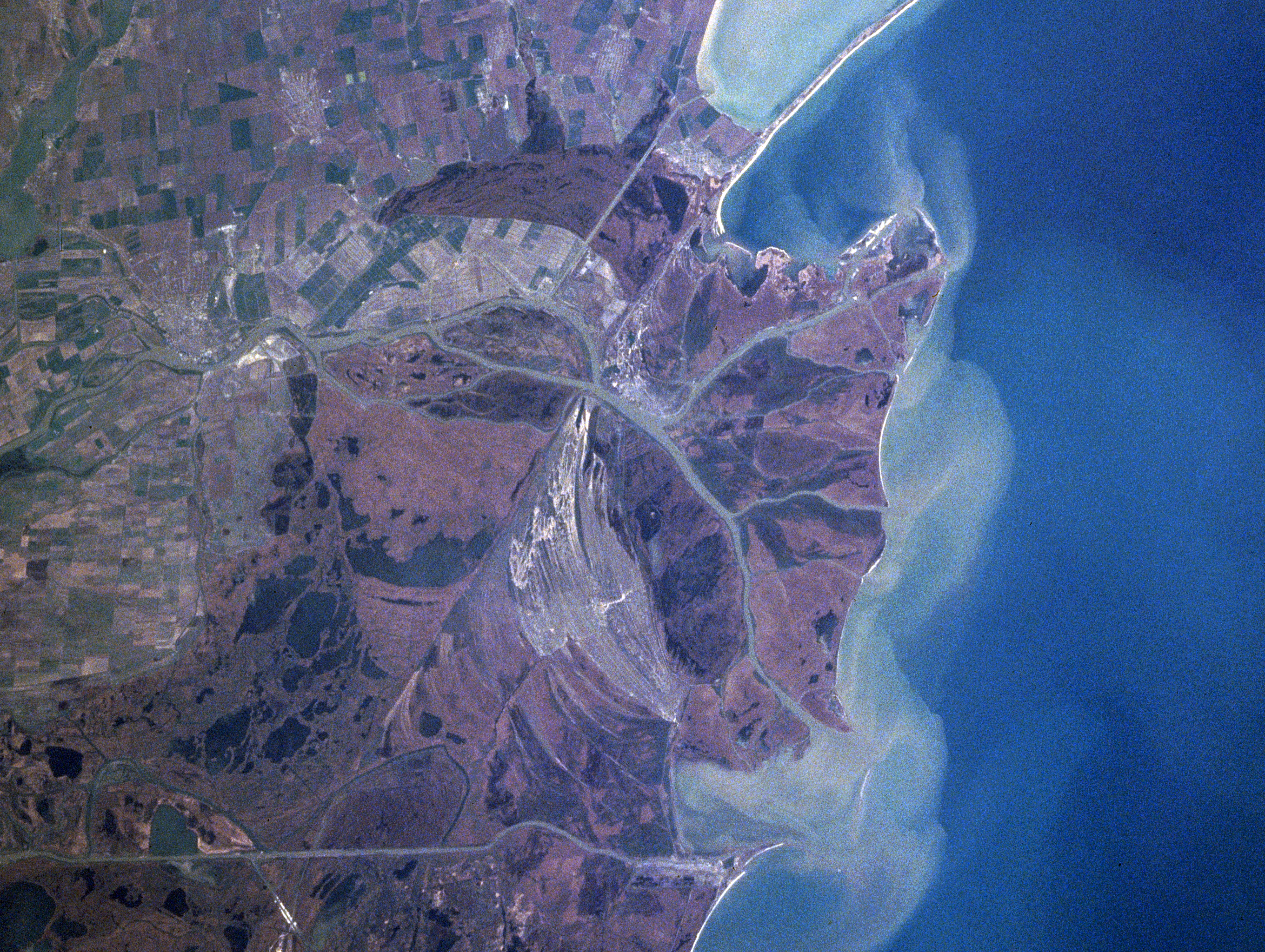| Revision as of 12:02, 1 June 2005 editBogdangiusca (talk | contribs)39,816 editsmNo edit summary← Previous edit | Revision as of 16:07, 11 June 2005 edit undoJimfbleak (talk | contribs)Administrators174,843 editsm →External linksNext edit → | ||
| Line 26: | Line 26: | ||
| ==External links== | ==External links== | ||
| * | * | ||
| * | * | ||
| * | * | ||
Revision as of 16:07, 11 June 2005

Satellite photo
The Danube Delta (3446 km²), located in Dobrogea, Romania and in Odes'ka oblast', Ukraine, is the largest and best preserved of European deltas.
Geography
Every year, the alluvium brought in by the Danube increases the width of the Delta by around 40 meters, making it extremely dynamic. Near Tulcea, the Danube is divided in three river branches before it flows into the Sea: Chilia, Sulina and Sfântu Gheorghe (Saint George), but many other channels make split the Delta into areas with reed, marshes and forests, some of which are flooded during the spring and autumn.
About 44 km of the Danube Delta lies the Snake Island, a territory which belongs to Ukraine but claimed by Romania.
In 2004, Ukraine inaugurated work on the Bistroe Channel that will provide a navigable link from the Black Sea to the Ukrainian section of the Danube Delta. The European Union urged Ukraine to shut it down, because it will damage the wetlands of the Delta. The Romanian side, committed to protecting the delta, said they will sue Ukraine at the International Court of Justice.
Nature
It hosts over 1,200 varieties of plants, 300 species of birds as well as 45 freshwater fish species in its numerous lakes and marshes. The Danube Delta has been entered onto the UNESCO list of World Heritage Sites and Biosphere reserves. Around 2,733 km² of it are strictly protected areas.
This is the place where millions of birds from different places of Earth (European, Asian, African, Mediteraneean) come to lay their eggs.
Around 2,500 years ago, as Herodotus says that the Danube was divided in seven branches.
Inhabitants
Around 15,000 people live in the Delta, most of them are living off fishing with their traditional wooden kayaks. It includes a community of Lippovans which are descendants of the Old Rite Followers who left Russia in 1772 to avoid religious persecutions. The main center of Lippovan community in Ukrainian part of Danube Delta is Vilkovo.